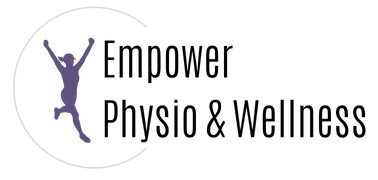One of the most common fears I hear from friends, family, clients, and strangers is that their joints or back will give out on them. Whether you’ve seen your parents struggle as they age or have heard horror stories about joint replacements, you’re not necessarily destined for the same fate. Let’s break down how to keep joints healthy as you age so you can thrive with each passing year.
What actually makes your joints “go bad”?
When you look at diseases of the body, very few of them are purely genetic. They may have a genetic predisposition but are highly influenced by environmental and lifestyle factors. While they may look genetic because of a familial pattern, some diseases are actually a result of learned behaviors and habits.
For example, type II diabetes is a lifestyle disease. Many studies propose a genetic predisposition, however, there is a huge lifestyle component to developing it. Let’s say Mom has type II diabetes. Poor nutrition habits and low levels of exercise are common causes. Her children are likely to adopt similar eating and exercise patterns, putting them at a higher risk for developing type II diabetes. I argue this is minimally due to genetics and more so due to lifestyle habits.
So how does this apply to your joints and back? There’s strong research to support that eating well, getting adequate amounts of exercise, maintaining a healthy weight, and keeping muscles strong is protective for joints. A 2012 study looked at the effects of genetics on osteoarthritis (OA) and one of their main conclusions was that “whether genetic risk factors for OA eventually manifest as clinical disease can depend on other physical, environmental, and biochemical stresses that are placed on the joints.” Put simply, just because your genetic history may make you think you’ll develop osteoarthritis, lifestyle plays a significant role in if you’ll actually have arthritic joint pain. 1
Taking lifestyle one step further, I’ll propose that in addition to the factors listed above, having a good QUALITY of movement plays a huge role in overall joint health. If your movement quality is suffering, this will always lead to movement compensations. Honestly, everybody compensates as a result of how we move in our daily lives. Some people compensate a lot while others compensate a little.
Why? Because certain joints or muscle groups are lacking in mobility. When mobility is lacking in one area, the body will find it elsewhere. For example, if your hips are tight, the body gets more movement from the spine. The spine is now moving way more than it’s intended to, resulting in back pain as it works harder to pick up the slack and stabilize.
Catch my drift here? When our bodies move well and are strong, we have the resilience to move, lift, hike, walk, run, and carry at a greater intensity and for a longer amount of time than we otherwise could.
How to keep joints healthy as you age
1. Maintain a healthy weight. Being overweight or obese puts an exponential amount of force on the joints, especially the spine and lower body. Each pound of excess weight equals 4 pounds of force on the knees. Losing just 10 pounds reduces weight on the knees by 40 pounds. That adds up quickly!
2. Eat low-inflammatory foods. Our bodies hate chronic inflammation. It’s bad for our nerves, joints, organs, and nearly every tissue in the body. Consuming high-inflammatory foods such as sugar, chemical sugar alternatives (like aspartame and sucralose), highly processed foods, fried food, and trans fats drive up inflammation in the body, impacting joint health. Limiting these foods may sound daunting, but small changes make a big impact. You may notice that you feel better by ditching just one or two Starbucks drinks a week.
3. Keep your feet healthy. Our feet are literally our foundation. When our toes are constricted by pointed-toe shoes or weakened by super supportive orthotics, the effects are felt higher up in the knees, hips, and back. The easiest thing you can do to show your feet some love is to give your toes space to spread out and move. Opt for shoes with a wide-toe box. My favorite brands are Altra, Whitin, Topo Athletic, and Xero shoes. You can also use toe spacers to stretch out your feet and toes. Check out Correct Toes–they are the best on the market! Start by wearing them for 30 minutes at a time and work your way up to a few hours a day. If (and only if) you have wide-toe box shoes, you can wear them while up and about.
4. Focus on mobility. I’m not talking about sitting and doing static stretches for 5 minutes. I’m talking about actively moving through your full range of motion for at least 15 minutes. Doing things like yoga or taking mobility classes is an awesome way to improve the way your joints move. FabYOUlous Fitness offers some top-notch options both virtually and in-person (women only).
5. Keep your muscles strong. Having good muscle strength is like developing internal braces to support your body. Ditch the knee and back braces–these actually train your muscles to be weaker–and hit some strength moves. Check out a local gym (shoutout to FabYOUlous Fitness and Xnox Performance), hire a high-quality personal trainer, or work with a physical therapist to develop a personalized strength routine. Choose something that makes you feel good and is fun to do so that you stay consistent. Want to build a great strength foundation? Check out my Bulletproof Your Core Program or the 15-minute workout that I designed.
Now you know how to keep joints healthy as you age. Give these strategies a try and let me know how it goes. For personalized recommendations, work with one of our physical therapists so we can identify your individualized needs and help you fill in any movement gaps. Future you will thank you!
References:
- https://www.nature.com/articles/nrrheum.2011.199



